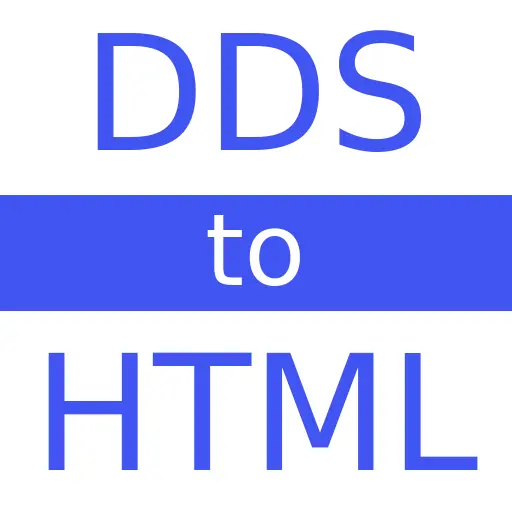DDS to HTML
Convert DDS to HTML (Fast & Free)
DDS to HTML Converter Tool - Your Day to Day Companion for High Quality Conversions
Hi there, and welcome to ProConvert! On this page you can easily change DDS to HTML with the help of our free, fast and secured online converter. DDS to HTML Converter Tool can be used with no limits or hidden charges. Don't forget, you can use the forum section below if you have any question for us or, leave us a rating in the ratings section so others can see what performant tools we have in place for free.
(or click to select files)
F.A.Q. / Frequently Asked Questions about DDS to HTML
Curious about how our platform works? ProConvert team got all your questions together and created the following Frequently Asked Questions section. Here you can find useful information about us. Don't see your question here ? Leave a question or a comment in the forum section and our team will help you as soon as possible.
File conversions were never that easy before. But good for you! ProConvert is here and gives you support and full access to convert or change DDS to HTML any time, with no limits or charges. Everything is free, created for your needs.
- Select DDS files you want to convert, from your computer or drag and drop it on the page.
- Press the "Convert" button in order to convert DDS to HTML.
- When the conversion is completed, click "Download" on the desired converted HTML file.
Useful information about DDS
| Extension: | DDS |
|---|---|
| Name: | DirectDraw Surface |
| Mime Type: | image/vnd-ms |
| Converter: | DDS Converter |
| Description: | The DirectDraw Surface container file format (uses the filename extension DDS), is a Microsoft format for storing data compressed with the previously proprietary S3 Texture Compression (S3TC) algorithm, which can be decompressed in hardware by GPUs. This makes the format useful for storing graphical textures and cubic environment maps as a data file, both compressed and uncompressed.[2] The file extension for this data format is dds. - Source |

Useful information about HTML
| Extension: | HTML |
|---|---|
| Name: | Hypertext Markup Language |
| Mime Type: | text/html |
| Converter: | HTML Converter |
| Description: | The HyperText Markup Language or HTML is the standard markup language for documents designed to be displayed in a web browser. It can be assisted by technologies such as Cascading Style Sheets (CSS) and scripting languages such as JavaScript. Web browsers receive HTML documents from a web server or from local storage and render the documents into multimedia web pages. HTML describes the structure of a web page semantically and originally included cues for the appearance of the document. HTML elements are the building blocks of HTML pages. With HTML constructs, images and other objects such as interactive forms may be embedded into the rendered page. HTML provides a means to create structured documents by denoting structural semantics for text such as headings, paragraphs, lists, links, quotes and other items. HTML elements are delineated by tags, written using angle brackets. Tags directly introduce content into the page. Other tags such as surround and provide information about document text and may include other tags as sub-elements. Browsers do not display the HTML tags but use them to interpret the content of the page. - Source |
In High Demand Converters / See What Others Convert
As you might know already, we have over 2600 converter tools like DDS to HTML on our platform. All of them are free to use and provides high quality computing for your needs. However, these are the most used converters on ProConvert at the moment.
Forum / Questions and Answers / Everything about DDS to HTML
You got it right! Here you can ask anything about DDS to HTML Converter Tool or any other information regarding our services. You can of course recommend us what to create further or improve as a feedback. We are eager to answer all your questions.
* The question will appear on this page once answered by one of ProConvert Team members.
There are no comments posted at the moment.


